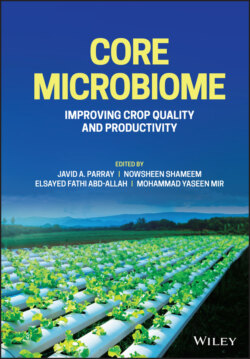Читать книгу Core Microbiome - Группа авторов - Страница 53
3.6 Medicinal Plants: Plant- and Microbe-Derived Ingredients
ОглавлениеPlants contain many active biological compounds, and plant-based medicine has been a part of traditional health care in most parts of the world, the most important being traditional Chinese medicine, phyto-therapeutic knowledge from the Mayans, Australian aboriginal medicine, and many other cultures that provide a huge spectrum for natural remedies exploited as therapeutic agents. Up till now, more than 5000 plant species biological compounds have been used against many diseases, providing the basis for the discovery of modern drugs, i.e. anticancer agents (Miller et al. 2010). These bioactive phytochemical compounds shift toward phyto-therapeutic agents produced by specific microbes during plant–host interaction (Compant et al. 2010).
Chinese medicinal plants such as (Ainsliaea henryi Diels, Potentilla discolor Bge, Juncus effusus L. var. decipiens Buchen, and Rhizoma arisaematis) showed specific actino-bacterial community and remarkable colonization with actinobacteria (Zhao et al. 2012). Moreover, they also showed antimicrobial and anticancer characteristics (Zhao et al. 2011). The levels of metabolites changed under stress conditions and produced hemiterpenoid compounds responsible for mitigating stresses. Ward et al. (2011) reported the isoprenoid pathway in Arabidopsis in leaves, which was diverted to hemiterpenoids. Such compounds are induced by root wounding or oxidative stress while being weakly induced by potassium deficiency. However, other stresses such as osmotic, cold, or saline stress did not induce compounds production. Nutrient deficiency stress has an impact on metabolism as well as hemiterpenoid glycosides production in leaves as compared with scopolin and conifer productions in roots. Sulfur deficiency in crops also affects secondary metabolites production and results in a reduction in the synthesis of glucosinolates (Kusano et al. 2011) and induction of anthocyanin biosynthesis. Glucuronosyl–diacylglycerol reportedly reduced stress metabolites under phosphorus-deficient stress (Okazaki et al. 2013), which could be used as lipidomics function genomics (Okazaki et al. 2013). Modern research predicted that a significant number of natural products are produced by microbes and supposed that endo-microbiome (plant–microbe) is involved directly or indirectly in producing phytochemicals. On the other hand, the only subset of potential microbial strains was qualified as phyto-therapeutic properties (Chandra et al. 2012) while their contribution toward known bioactivity of medicinal plants is not clear yet. Bioactive compounds released by the host plants and the microorganisms that produce those compounds with therapeutic properties are shown in Table 3.3.
Table 3.3 Bioactive compounds that are released by host plants and the microorganisms involved in the production of therapeutic properties.
| Bioactive compound | Therapeutic properties | Host plant | Producing microorganism | References |
|---|---|---|---|---|
| Cochliodinol | Antibacterial, antimycotic, anticancer | Salvia officinalis | Chaetomium sp. | Debbab et al. (2009) |
| Botryorhodines | Antimycotic, anticancer | Bidens pilosa | Botryosphaeria rhodina | Abdou et al. (2010) |
| Phomol | Antiphlogistic, antibacterial | Erythrina crista-galli | Phomopsis sp. | Weber et al. (2004) |
| Podophyllotoxin | Anticancer, antiphlogistic | Podophyllum hexandrum, Juniperus communis | Alternaria sp., Aspergillus fumigatus | Yang et al. (2003) |
| Camptothecin | Anticancer, antiviral (HIV) | Nothapodytes foetida, Camptotheca acuminate | Entrophospora infrequens, Fusarium solani | Puri et al. (2005) |
| Maytansine | Anticancer | Putterlickia verrucosa | Actinosynnema pretiosum | Wings et al. (2013) |
| Rohitukine | Antiphlogistic, anticancer | Dysoxylum binectariferum | Fusarium proliferatum | Mohana Kumara et al. (2012) |
| Munumbicins | Antibacterial, antimycotic | Kennedia nigriscans | Streptomyces sp. | Castillo et al. (2002) |
| Kakadumycins | Antibacterial, antiplasmodial | Grevillea pteridifolia | Streptomyces sp. | Castillo et al. (2003) |
| Coronamycins | Antimycotic, antiplasmodial | Monstera sp. | Streptomyces sp. | Ezra et al. (2004) |
